
Medical Vs Recreational Cannabis: What's The Difference?
Knowing where to draw the line between recreational and medical cannabis can be difficult. In this article, we take an in-depth look at what separates the two. By the end, you'll have a much clearer understanding of what cannabis means to the world, and to you.
The words “medical” and “recreational” get thrown around a lot in the cannabis space. If you’re new to the world of weed, however, understanding the differences between these terms can be tricky.
In this article, we’ll teach you everything you need to know about medical and recreational cannabis, including their differences and similarities, so we can hopefully broaden your understanding of marijuana and its many different uses.
Understanding Cannabis Terminology
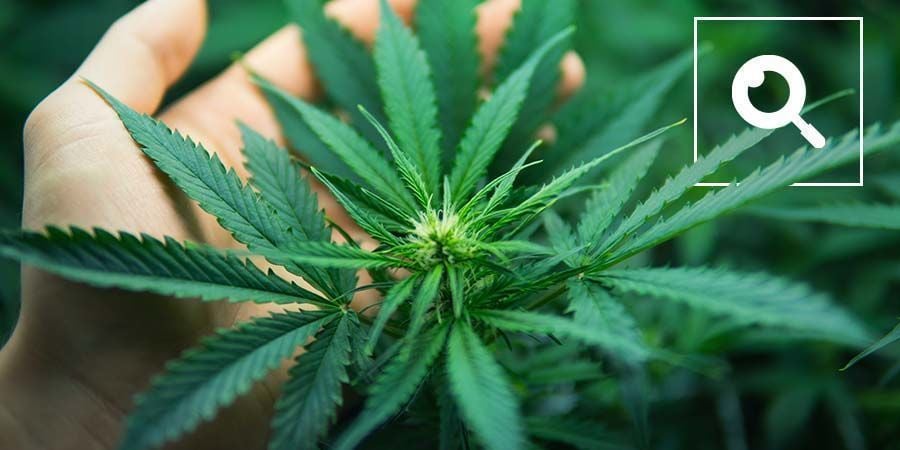
For newcomers to the cannabis space, wrapping your head around cannabis terminology can be tough. The terms “medical marijuana” and “recreational cannabis”, for example, are used constantly by both the media and cannabis professionals. Their meanings, however, aren’t always clear, and, in fact, many people use the terms interchangeably (“recreational marijuana” and “medical cannabis”).
However, understanding the terminology we use to describe cannabis is super important to ensure clarity when discussing this ancient plant and how we plan to use it.
What Are the Differences Between Medical and Recreational Weed?
There are many misconceptions surrounding the differences between medical and recreational marijuana. Below, we’ll address some of these myths, and show you what really constitutes their differences.
Cannabinoid Content
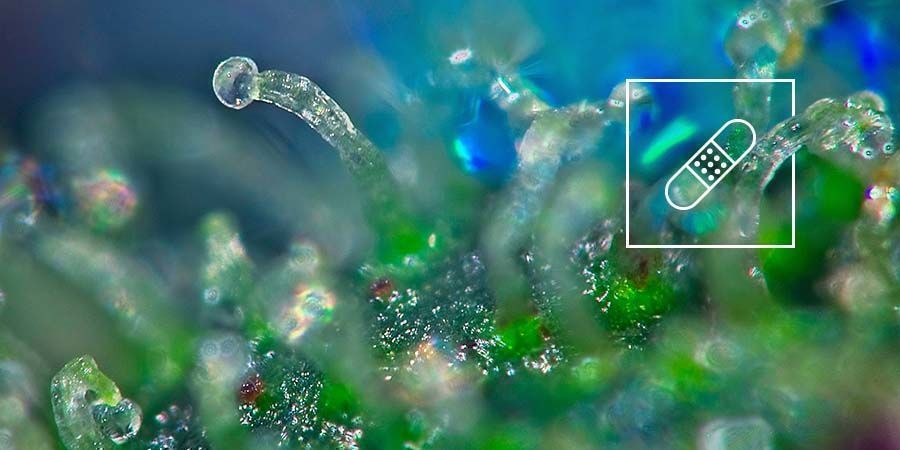
Many people believe the main difference between medical and recreational weed to be the cannabinoid content. This is largely due to companies marketing CBD-rich products as “medical”. But the truth is that any cannabis variety can be used with holistic intent, as almost all major cannabinoids have been explored for their clinical potential.
Medical Marijuana
For a long time, the media has mistakenly labelled CBD as the medicinal compound in cannabis, and THC as the thing that gets us high, which has undoubtedly fed the misconception that medical cannabis must be rich in CBD. In fact, for several years, cannabis seed banks and dispensaries have labelled their CBD-rich products as “medical” and their THC offerings as "recreational".
However, new research and a greater understanding of cannabis has shown us that THC, CBG, CBC, CBDV, THCV, and many other cannabinoids (as well as terpenes) play an equally important role in cannabis’ clinical potential as CBD.
| ✔️ Features CBD and/or THC as its dominant cannabinoid(s), as well as other cannabinoids |
| ✔️ Focuses more on holistic benefits than getting high |
| ❌ Misconception that medical weed only contains non-intoxicating cannabinoids (CBD) |
Recreational Cannabis
Historically, recreational cannabis strains have been bred to be very rich in THC. That's because, for the longest time, THC was believed to be the only active ingredient of interest in marijuana, so breeders focused on developing varieties that were extremely rich in the substance, without paying much attention to other cannabinoids/terpenes.
However, thanks to new research, this is changing, and recreational marijuana strains are starting to feature all manner of cannabinoids in addition to THC.
| ✔️ THC catalyses a euphoric high |
| ✔️ Now available alongside other cannabinoids |
| ✔️ Rich in terpenes for extra flavour and aroma |
| ❌ The high is not for everyone |
| ❌ Lack of in-depth labelling of cannabinoid content |
| ❌ High THC content makes it illegal in some areas |
Purpose of Use

This is arguably the greatest distinction between our two competing terms: purpose of use. Why do you use cannabis?
Medical Marijuana
Medical cannabis, in general, is used to promote some kind of relief from symptoms associated with an acute or chronic condition.
However, today, there is a growing tendency to accept a broader use of cannabis as medicinal use. Yet, it is important to realise that most places with a legal market make clear distinctions surrounding what constitutes medical use of the plant. Most governments, for example, only recognise a small selection of symptoms or medical conditions as applicable for treatment with cannabis. In the US, certain states only prescribe cannabis to treat the side effects of chemotherapy, severe epilepsy, or antiretroviral therapy.
Meanwhile, countries like Argentina, Chile, and Germany have much more liberal approaches to medical cannabis, with a much longer list of qualifying symptoms or ailments. Either way, almost every country with a legal medical marijuana programme requires patients to register their condition and intended use of cannabis, usually supported by a doctor’s prescription for cannabis treatment.
| ✔️ Generally used to treat a specific ailment or symptom(s) |
| ✔️ Typically acquired via a legal, registered medical marijuana programme |
| ❌ Some laws limit the use of medical marijuana to people with specific ailments or symptoms |
| ❌ Patients must register their cannabis use and acquire a prescription |
Recreational Cannabis
In general, recreational cannabis is geared toward anyone who wants to use cannabis for enjoyment or pleasure, rather than to relieve a specific condition or symptom. In places where cannabis is legal, recreational cannabis is regulated and sold similarly to alcohol, tobacco, or other legal recreational drugs.
Today, we’re lucky to be living in an era of rapid change regarding attitudes toward cannabis. Many professionals and cannabis activists nowadays go so far as to claim that all use of cannabis is medical, be it to encourage focus and motivation or to simply unwind and relax after a long day.
| ✔️ Available to any adult over the legal age of consumption (18 in some countries, 21 in others) |
| ✔️ Used for personal and social enjoyment |
| ✔️ Recreational use is considered by some to have holistic value |
| ❌ Some countries require recreational users to register with the government (like Uruguay) |
| ❌ May not be designed to provide holistic effects |
Accessibility
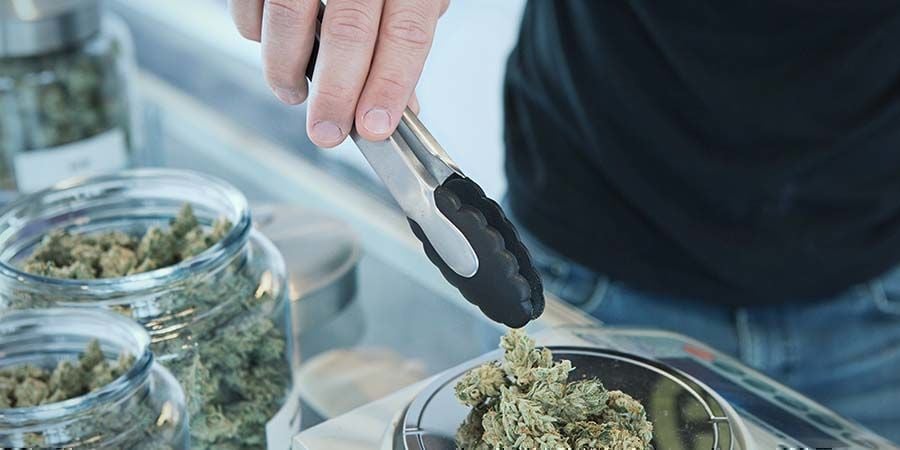
Another major difference between recreational and medicinal cannabis has to do with their availability. Here is where the terminology has a big impact on legality, and ultimately on cannabinoid content as well.
Medical Marijuana
In general, far more places allow for the medical use of cannabis than recreational use.
In the US, 36 states have legalized (at least to some extent) the medicinal use of cannabis, while only 18 states allow for recreational use. Throughout the 50 states, the exact laws on how people are able to access cannabis vary greatly.
In California, for example, medical cannabis patients are able to possess and grow much more cannabis than recreational users. California dispensaries also tend to have separate counters, products, and cashiers to serve recreational users and medical patients.
Not only that, but some states consider medical cannabis to be exclusively that which is rich in CBD and low in THC.
Outside of the US, other countries draw clear distinctions between recreational and medical cannabis, and legislate their accessibility accordingly. In Holland, medical cannabis is sold via pharmacies to patients with a prescription. Medicinal cannabis in the Netherlands is subject to the Dutch Medicines Act and tight regulations regarding its cultivation and sale.
| ✔️ Generally more accessible than recreational cannabis |
| ✔️ Qualifying conditions and symptoms vary depending on the region |
| ❌ Access may be limited to those with certain illnesses |
| ❌ Patients may only be allowed to buy or grow a certain amount of cannabis per household |
Recreational Cannabis
Recreational cannabis, on the other hand, can be bought and sold in small quantities at coffeeshops or dispensaries. And while there is nothing stopping a patient from buying their cannabis from a coffeeshop rather than a pharmacy, it is important to recognise that the cannabis sold at these shops is nowhere near as tightly regulated as that sold at pharmacies via the government’s medical cannabis programme.
Just like more US states have legalized medical weed than recreational, the same rings true across the world, although that is slowly changing as more governments change their stance on cannabis laws.
Among those without access to dispensaries, coffeeshops, and cannabis clubs, weed is still sourced from the street, as it were. This ultimately comes with a lack of product knowledge and great inconsistency.
| ✔️ Where it is legal, recreational cannabis can be sold to anyone of legal age |
| ✔️ Recreational users typically do not need to register with the government |
| ❌ Recreational cannabis is legal in far fewer countries than medical marijuana |
| ❌ Possession and purchase limits are often lower for recreational users than medical patients |
Cultivation
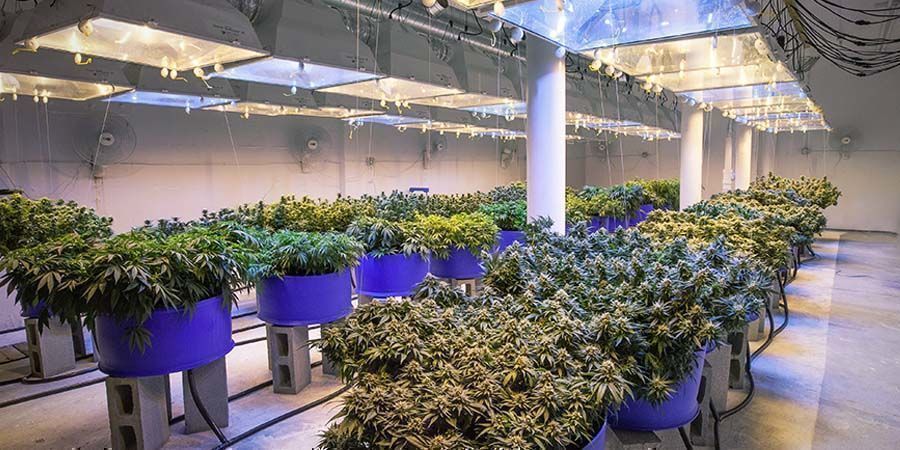
Cultivating cannabis, to a certain extent, is pretty straightforward. Cannabis plants are hardy and grow well in a variety of conditions, even if those conditions aren’t exactly ideal. Nonetheless, professional cannabis growers often use high-tech equipment, controlled growing environments, and a variety of nutrients and supplements to grow plants that produce higher yields of higher-quality product.
Medical Marijuana
Generally speaking, cannabis grown for medicinal purposes is subject to far more restrictions than cannabis grown for recreational purposes. Most regions that have legal medical cannabis programmes treat medical cannabis like any other medicine, and carefully regulate its quality, potency, and production as such.
Again, we can look to the Netherlands for a clear example of the different cultivation standards for medical and recreational cannabis. Recreational cannabis sold via coffeeshops, for instance, undergoes no quality control, as there are no real regulations put in place.
Medicinal cannabis, on the other hand, needs to meet several standards set by the Dutch government under the Dutch Office of Medicinal Cannabis (OMC). Cannabis sold under the Dutch medical cannabis programme needs to be grown to strict pharmaceutical guidelines and supervised by the OMC, and must undergo regular testing by certified laboratories.
| ✔️ Produced under strict guidelines and subject to regular testing |
| ✔️ Complies with pharmaceutical standards |
| ❌ Potential lack of variety in available strains, as it is all grown to the same standards |
Recreational Cannabis
Some regions with legal medical and recreational cannabis programmes take different approaches to the Dutch model outlined above. Places like the US, Canada, and Uruguay are putting much more emphasis on producing recreational cannabis to similarly stringent standards as medical cannabis.
After all, recreational cannabis grows exactly the same as medical cannabis. However, the laws governing how producers grow their weed, and what standards it must comply with, can vary dramatically.
Whereas medical weed needs to meet very strict regulations, recreational weed often doesn't. It might be sold with more pollutants, or grown with more aggressive fertilisers or pest control methods. There may also be fewer regulations regarding how recreational weed is processed, packaged, and shipped.
| ✔️ More variety in products |
| ❌ Less quality control |
| ❌ Potential for harmful substances in the end product |
Quality

And finally, we come to quality. A debate rages on regarding the difference between medical and recreational cannabis in this regard, and truly, there are a lot of variables at play.
Medical Marijuana
As medical cannabis is often subject to tighter restrictions, controls, and regulations, some people argue that medical-grade cannabis is of higher quality than recreational weed. Whether or not this is true is debatable.
In 2006, Dutch cannabis researcher Arno Hazekamp published a report analysing the differences in quality between medical-grade cannabis (provided by the only authorised provider of medical cannabis in Holland, Bedrocan) and recreational cannabis bought from coffeeshops. The study found that in terms of potency and water levels, the differences between the two were negligible.
However, the medical-grade and recreational cannabis samples used in the study differed substantially on the following levels:
-
Dry weight: Many coffeeshops falsified the dry weight of the cannabis samples they provided (sometimes by several grams).
-
Contaminants: The cannabis bought at coffeeshops tested significantly higher for moulds and bacteria, which could be considered a health risk, especially when the cannabis is heated and inhaled.
Keep in mind that this study focused on the difference between recreational and medical cannabis samples in Holland. While no similar studies have been conducted in other legal markets, legislation from places like Canada and the US suggest that governments in these regions are beginning to enforce tighter quality controls for recreational cannabis as well.
| ✔️ Often mistakenly thought to be “more potent” than recreational weed |
| ✔️ Subject to tighter quality control, which may help eliminate problems with contamination |
| ❌ May be more expensive |
Recreational Cannabis
As we learn more about cannabis, consumers are growing far more concerned about product quality. We've found that the demand for higher-quality cannabis increases rapidly in areas that legalize weed, and as a result, the quality gap between medical-grade and non-medical-grade cannabis is shrinking.
| ✔️ Tends to be equally potent as medical-grade cannabis |
| ✔️ Quality control has improved, but is still behind medical cannabis |
| ❌ Subject to less quality control overall, which can result in poorer quality |
Top Medical Marijuana Strains
Medical cannabis comes in all kinds of varieties. Depending on the intentions of the seed bank or breeder, medical strains offer unique cannabinoid and terpene profiles to help soothe various symptoms or generally promote wellness. These plants produce resinous flowers that make them perfect for concentrating into oils, tinctures, and other extracts for enhanced effects. The possibilities really are endless.
Some famous medical cannabis strains include:
-
Cannatonic by Resin Seeds: Boasting high levels of CBD and nominal THC content, this is a strain that's perfect for those looking for CBD's potential benefits without the intoxicating effects typically associated with cannabis.
-
Fast Eddy by Royal Queen Seeds: This unique autoflowering cannabis strain was bred to be rich in both THC and CBD, making for balanced effects that many patients appreciate.
Top Recreational Cannabis Strains
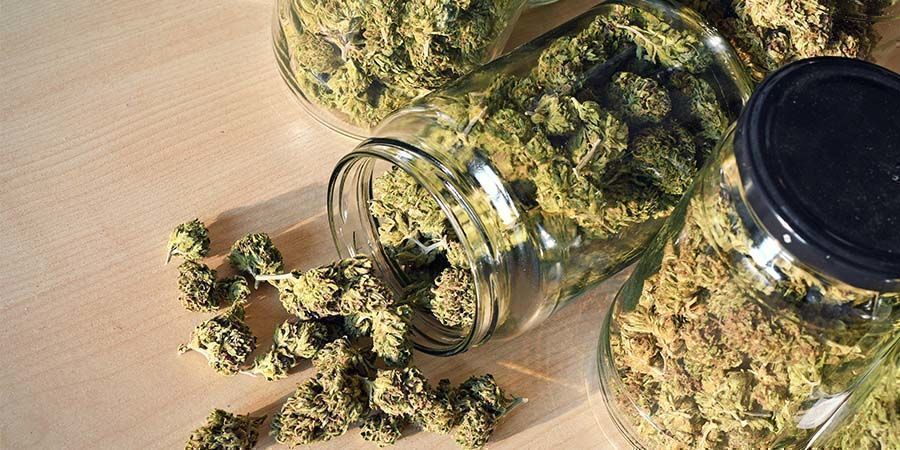
Like medical strains, recreational cannabis comes in all sorts of varieties. While most of them have been bred to be rich in THC, breeders are beginning to amplify the selection to include strains rich in CBD, THCV, and more! Ultimately, the chemical profile of recreational strains can vary tremendously, but all are intended to promote enjoyment.
Some classic recreational cannabis strains include:
-
Blue Dream: A cross of Blueberry and Haze, the US-born Blue Dream has become a household name among cannabis enthusiasts, thanks to its high potency, balanced effects, and delicious aroma.
-
AK-47: A super-sativa beast, AK-47 has been bred for smokers that love an intense, uplifting, and euphoric high. Capable of producing well over 20% THC, this is another classic strain that's won its place in the hearts of cannabis lovers across the globe.
Which Is Better: Medical or Recreational Cannabis?

There is no better or worse when it comes to the medical versus recreational cannabis conundrum. Picking one over the other really comes down to personal preference and how you plan to use this plant, not to mention the laws governing recreational and medical use in your region.
If you’re looking for reliable relief, we obviously recommend signing up for a medical cannabis programme and working with a physician to find a course of action that works for you. If, on the other hand, you’re looking to simply enjoy cannabis for its flavour and effects, check out the recreational cannabis available in your region.
- (n.d.). An evaluation of the quality of medicinal grade cannabis in the Netherlands - https://cetadobserva.ufba.br
-
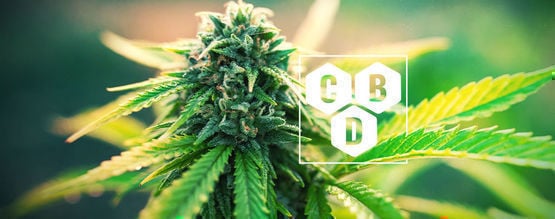 6 min
9 August 2022
What Is Cannabidiol (CBD)?
CBD has risen to stardom in the supplement world. But what propelled a single plant-derived molecule to such great heights? There are certain elements at play here. Early research has turned out...
6 min
9 August 2022
What Is Cannabidiol (CBD)?
CBD has risen to stardom in the supplement world. But what propelled a single plant-derived molecule to such great heights? There are certain elements at play here. Early research has turned out...
-
 9 min
2 September 2021
Understanding The Importance Of Different CBD:THC Ratios
The cannabis community is ripe with development and innovation. Breeders are now creating strains with diverse CBD:THC ratios, and scientists are urgently striving to discover their potential.
9 min
2 September 2021
Understanding The Importance Of Different CBD:THC Ratios
The cannabis community is ripe with development and innovation. Breeders are now creating strains with diverse CBD:THC ratios, and scientists are urgently striving to discover their potential.
-
 4 min
13 June 2019
Everything You Need To Know About THC
THC—this simple molecule inspires millions of people to grow cannabis every year. But what exactly is THC? And why do people love it so much?
4 min
13 June 2019
Everything You Need To Know About THC
THC—this simple molecule inspires millions of people to grow cannabis every year. But what exactly is THC? And why do people love it so much?
-
 3 min
22 July 2018
Top 6 Vaporizers For Medical Cannabis
Medicinal marijuana users vaporize for a number of health reasons. Understanding the full range of possible benefits of vaping (besides decreased toxins) helps users get the most out of cannabis.
3 min
22 July 2018
Top 6 Vaporizers For Medical Cannabis
Medicinal marijuana users vaporize for a number of health reasons. Understanding the full range of possible benefits of vaping (besides decreased toxins) helps users get the most out of cannabis.
-
 4 min
4 May 2018
What Is The Best Way To Use Medical Cannabis?
We explore the pros and cons of various medical marijuana consumption methods. After reading this article, you should have a better idea of which method(s) you believe may be right for your...
4 min
4 May 2018
What Is The Best Way To Use Medical Cannabis?
We explore the pros and cons of various medical marijuana consumption methods. After reading this article, you should have a better idea of which method(s) you believe may be right for your...
-
 6 min
30 November 2017
The Top 10 Medical Cannabis Strains
If you’re lucky enough to live in an area where medical marijuana is legal, you’re likely familiar with the abundance of cannabis strains out there. In this article, we’ve done our best to...
6 min
30 November 2017
The Top 10 Medical Cannabis Strains
If you’re lucky enough to live in an area where medical marijuana is legal, you’re likely familiar with the abundance of cannabis strains out there. In this article, we’ve done our best to...













 United States
United States










